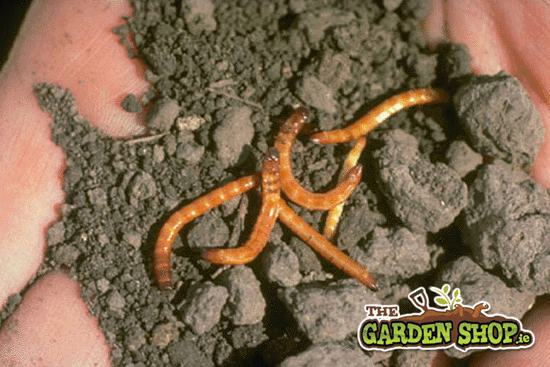How to Control Against Wireworms
Wireworms are a common pest of potatoes, leaving a series of narrow tunnels through tubers from time of planting and peaking in attacks by mid August. They are a very difficult pest to control as there is little effective chemical or biological control options. This means that only hard work and good gardening practices will keep their number and damage down.

Wireworms are the larvae of the click beetle. Their larvae stage last for 3 to 5 years which is an extremely long time for a larvae stage to last. Given that the larvae stage of any insect is the most harmful to vegetable crops, it is no surprise that the wireworm is such a nuisance in the garden.
How to Recognise Wireworms
They start life in Spring as eggs and then hatch to 5mm larvae in the Summer. Over the next 5 years they can grow to 5cm in length as they become increasingly hungry and damaging to crops. They feed on tubers, roots and bulbs and can be recognised by their browny yellow colour. Damage to potatoes can be seen as narrow openings approx. 3mm in diameter burrowed into tubers. When potatoes are cut in half it reveals a network of tunnels throughout the spud. This is different from slug attacks as slugs general leave larger crevasses in the tuber.
How to Control
Chemical Options
There are a few active chemicals which have had some but limited effects in controlling wireworm attacks
- Imidacloprid – effects are very limited
- Calcium cyanamide – A fertilizer which can be applied to reduce pest numbers – also relatively ineffective
- Mocap 20 GS – The most effective chemical option. This has been tested on crops in Germany and shows a 57% success rate
Biological
- SuperNemos - Look out for this product on the market as it is very effective at controlling Wireworms
Cultural Control Options
The best way to control wireworms is to manage your soil correctly. Wireworms are most commonly found in grassland. If your vegetable plot has been recently created on grassland then it is likely that you would have a wireworm issue.
- Good cultivation of soil will help to reduce and control the population numbers. By digging and turning your soil you can expose the worms to the sunlight, which will cause the worms to dry out and die
- As you cultivate, you should pick out the worms as you see them. Over a number of seasons you can really reduce wireworm numbers this way. Also after 5 years the initial worm larvae will have developed into the adult click beetle which is no longer a pest. At this point the wireworm issue should reduce significantly
- At the start of the growing season you can position traps in the soil to attract and capture the worms. Cut new potatoes in half and bury them 1ft deep in the soil. Position a bamboo cane at each potato to remind you where they are. After 3 days lift the potatoes and dispose of the potato and wireworms inside
- Attack of wireworms is greatest in August. To reduce effects you should harvest early. Or grow early potatoes such as Orla, Sharps or Queens
- Inspect crops regularly and if early signs of damage is noticed you should harvest your entire crop








